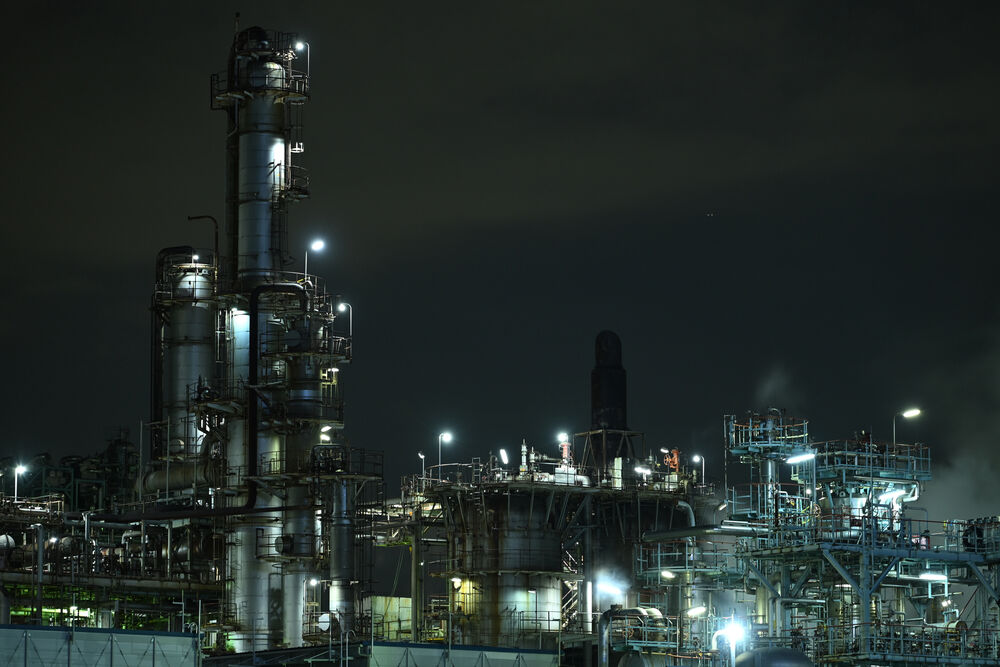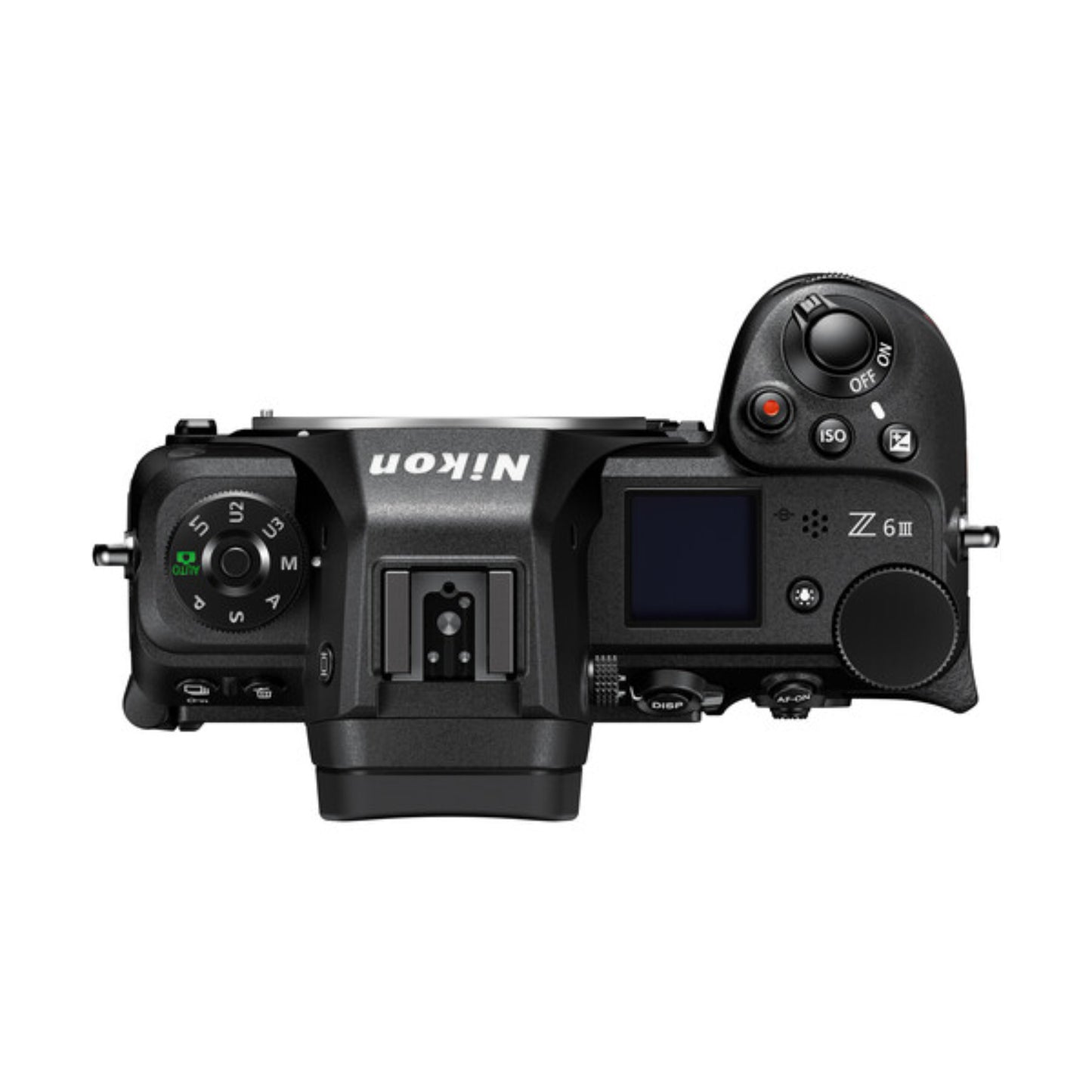1
/
of
5
Nikon Z6 III Mirrorless Camera
Nikon Z6 III Mirrorless Camera
Regular price
$4,959.00 NZD
Regular price
Sale price
$4,959.00 NZD
Unit price
/
per
Taxes included.
Shipping calculated at checkout.
Contact us
Couldn't load pickup availability
Features:
- 24.5MP Partially-Stacked CMOS Sensor
- EXPEED 7 Image Processor
- 6K 60p N-RAW, 6K 30p ProRes RAW
- 4K 120p, Full HD 240p Slow Motion Video
Massive Upgrades for a Mid-Range Monster
Sporting a new and inspired partially-stacked sensor design, the Nikon Z6 III Mirrorless Camera unlocks a number of flagship-level upgrades for this mid-range camera, including faster and more precise autofocus, professional-level 6K internal raw video, pre-capture at up to 120 fps, and a smooth, bright, colourful EVF. Taken together, these upgrades make this mirrorless monster an ideal choice for aspiring professionals in search of an all-around, affordable camera.
Newly Designed Sensor and Flagship Processing
24.5MP Partially-Stacked CMOS Sensor
The Z6 III is Nikon's first camera to to feature a partially stacked sensor design for faster scans and readouts than its predecessor. The design also reduces rolling shutter and noise levels when working at the top end of the ISO range. Additionally, this sensor design unlocks many of the flagship-level features in the camera, like faster autofocus, a smoother EVF experience, faster continuous shooting speeds, and higher frame rates when shooting video.
EXPEED 7 Image Processor
Complementing the sensor is the EXPEED 7 processing engine, found in the top-of-the-line Z8 and Z9 mirrorless cameras which offers speeds approximately 10x faster than the Z6II. This engine works in conjunction with the partially-stacked sensor design to realise impressively fast AF speeds, burst shooting rates, a high buffer capacity, fluid video performance, and quick all-around handling.
- Top continuous shooting speeds of 20 fps when shooting in raw, up to 60 fps when shooting in full-frame JPEG, and 120 fps when shooting JPEGs using a DX crop, with all rates supporting full AF/AE performance.
- Able to buffer over 1000 images in a burst when using the electronic shutter, meaning image sequences can be recorded for approximately 50 seconds continuously.
- Pre-Release Capture at up to 120 fps helps make decisive moment shots easier by recording frames in a burst for up a second prior to actually releasing the shutter. When this feature is activated, burst shooting will commence when the shutter is half-pressed and the buffer will retain up to 3 seconds' worth of frames prior to fully pressing the shutter.
- Electronic shutter affords a top shutter speed of 1/16,000 sec for working in the brightest conditions with wider apertures.
- Partially-stacked sensor design reduces rolling shutter distortion so fast-moving subjects, like a golf club, tennis racket, or baseball bat, do not appear distorted when working with shutter speeds up to 1/16,000 sec.
- AF calculations are done at a 120 fps rate to keep up with fast continuous shooting speeds.
493-Point Phase-Detection AF
Covering the full sensor area, the Z6 III's flagship EXPEED 7 processor unlocks Nikon's flagship 493-point phase-detection AF system to realize fast and accurate focusing performance. This system is benefitted by the high-speed communication of the Z interface along with the speed of the sensor that enables AF readings to occur at up to 120 fps.

This focusing system also supports working in low-light conditions with a Starlight mode that permits focusing down to -10 EV to greatly benefit astrophotography, concert, and other nighttime shooting applications. Featuring the highest native ISO in a Z-series camera at ISO 64000, the autofocus is also useful for working in difficult lighting conditions. The Backlit AF function uses separate pixels on the sensor that allows these areas to intentionally overexpose for focusing accuracy purposes without impacting the actual exposure of the recorded image.
A mainstay focusing mode in DSLRs, which debuted for mirrorless with the Z9, the Z6 III also includes 3D Tracking AF that pairs with subject detection to lock onto fast, erratically moving subjects that move parallel and perpendicular to the camera. Additionally, there are three Dynamic-Area AF modes, with a range of focus area sizes, for capturing a broad variety of moving subject types.
Subject Detection with Deep Learning Technology
Utilising inherited algorithms and deep learning technology from the Z9, including sophisticated Subject Detection, the Z6 III can recognise a variety of distinct subject types, ranging from humans to animals to airplanes to bicycles. When working in Auto-Area AF, these subjects will automatically be detected, focused on, and tracked to ensure sharp focus when the subject is moving across the frame.
Eye-Detection AF, specifically, has been tuned for improved accuracy and refined recognition of eyes in the scene, regardless of how small or large they are within the image frame, and can also be used in conjunction with custom Wide-Area AF for different subject shapes and sizes.

More Beautiful Portraits
Perfect for portraits, the Z6 III improves on the partially-stacked sensor's inherent capabilities with a series of processing tools and shooting functions to improve portraits:
- Portrait mode processes portraits for skin with natural texture and a rounded feel
- Rich Tone Portrait mode, a picture mode that produces more vivid results while capturing details of the subject's complexion and avoiding loss of detail in the highlights
- Flat Monochrome mode features gentle gradations from highlights to shadows, producing soft monochrome portraits
- Deep Tone Monochrome mode chooses slightly darker tones in the range from shadows to mid-tones, with brightness rapidly increasing as tones progress from mid-tones to highlights
- Skin softening can be used on up to three subjects in a shot and slightly blurs the skin for a more pleasing texture while still retaining essential sharpness on eyes and hair
- Manual white balance control is more intuitive when making adjustments and Auto WB has also been optimized for human subjects
- Take full advantage of Nikon's portrait modes by pairing the Z6 III with one of Nikon's portrait Z lenses, like the 50mm f/1.2 S, the 85mm f/1.2 S, or the 135mm f/1.8 S Plena

Pixel Shift Technology
Produce ultra-high resolution images at up to approximately 96 megapixels using pixel shift technology. By slightly shifting the image sensor between shots - selectable between 4 and 32 shots per image, with more shots meaning more detail - users can merge the images in NX Studio after shooting to create a single image with enhanced resolution, texture, and color. The shooting method also also reduces noise, moiré, and false colors. Pixel Shift photography benefits archival, landscape, architecture, fine art, macro, and film digitizing applications, and achieves its best results when working with a tripod.
Professional Level Video
Share










